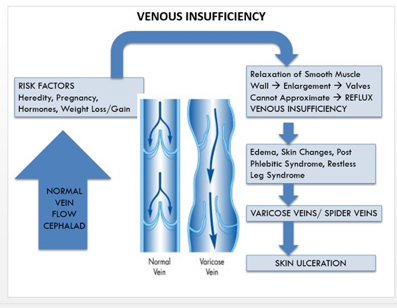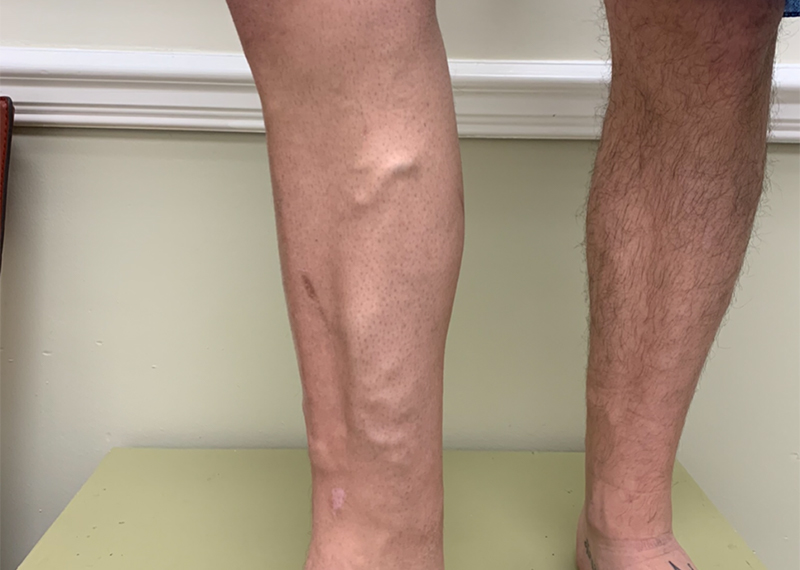Podiatric Vein Care
Using the Vein Roadmap Analogy to Understand Vein Reflux
Using the Vein Roadmap Analogy to Understand Vein Reflux

Vein circulation in the legs is often compared to a roadmap. There are veins that move in a parallel direction cephalad, returning blood to the heart. Often these avenues in the superficial system create a roadmap with various connections. Surface vessels will dump into reticular veins that dump into tributaries that will dump into superficial veins which will dump into main branches. Similar to how neighborhood streets exit onto a community road that travels to a larger city avenue that merges into highway traffic.

Veins move blood towards the heart and are doing so against gravity. To ensure circulation occurs in a cephalad direction, one-way flow veins have valves that act as leaflets. The definition of venous insufficiency is when vein valves are not appropriately working, allowing a backflow of blood towards the feet. When a patient has venous insufficiency, there is a backflow of blood causing an increase in hydrostatic pressure of the fluid in a tube or in this case, blood in the vessel. The goal of successful endovenous ablation techniques are to close off the portion of the vein that has leaky valves, rerouting the blood flow in another direction towards the heart. By eliminating the weak part of the circulation, the overall circulatory venous system is improved.

The analogy I use with my patients is the roadmap analogy. Highway 95 and the Turnpike run parallel. They are connected through various avenues. If there is an accident on 95 and the cars are getting backed up, it will cause a large pile-up along the highway. If Highway 95 could be shut down, the traffic could be diverted to the Turnpike. Although the traffic is diverted, there is still a constant flow and movement of cars. This is the exact reason why venous insufficiency is an ongoing, maintenance entity. Diverting traffic to a new highway or vein will cause congestion on that new pathway analogous to insufficiency of another vessel. One may ask why close down the original vessel to begin with? When patients present with symptomatic varicose veins, including tiredness, heaviness, aching, swelling, and night cramping, treating the refluxing vessel is indicated. This will improve quality-of-life. The recommended post-procedure treatment is the use of compression therapy. Compression therapy will reduce the back flow of blood through any other vessel. Even still, maintenance is required over time, as venous insufficiency is an ongoing entity.



Comments
There are 0 comments for this article